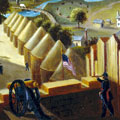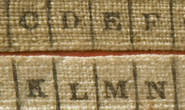A War of No Quarter

Union troops from Kansas invaded Missouri, looting and pillaging wherever they went. This prompted guerrillas to retaliate, resulting in further Union response. It became a cycle of destruction. State militias' primary objective was to engage guerrilla forces.
Atrocities were commonplace. Ten prisoners were executed in Palmyra in reaction to the disappearance of a Union man. In Centralia, guerrillas killed 23 unarmed Federal soldiers. Union leaders tried to suppress guerrilla activity with a combination of military might and repressive policies. They also recognized that they must contend with an uncooperative public. Several measures were instituted to punish disloyal Missourians and purge guerrillas from the state. The most severe policy was Union general Thomas Ewing Jr.'s infamous Order No. 11. The order banished thousands of inhabitants, even some loyal to the Union, from four counties bordering Kansas. Left in the wake of the implacable dispersal were the charred remains of homes, barns, and fields set on fire by marauding Union troops. The area became known as the "Burnt District." Confederate Bushwhackers are often considered notorious murderers who terrorized Missouri during the war. But actions taken by some Union men were equally destructive. The general population often found itself caught in the middle, subjected to the unconventional methods of warfare employed by both sides that resulted in a brutal and psychological war within a war.






